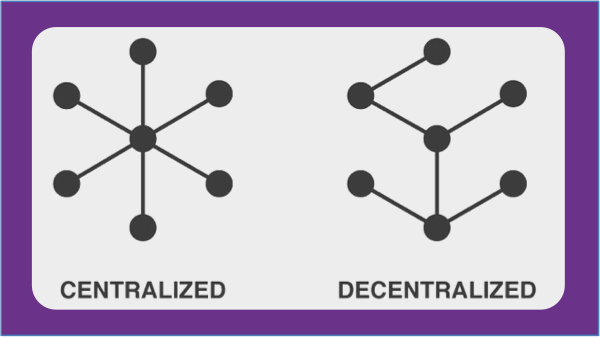Most enterprises have an ongoing debate about how best to organize their project management functions. Should project management be a centralized shared service? Or should project managers be decentralized and embedded within their functional organizations?
The answer is, “It depends.” Every enterprise is unique, with its own organizational structure, culture, expectations, and needs. Similarly, projects and programs have specific characteristics that may favor one model over another.
This article outlines considerations for making this decision.
Defining Terms
Contents
Defining centralized vs. decentralized project management is complicated. Few organizations operate in a pure model. Within the same enterprise, one unit may be centralized, while another is decentralized, and a third does both. Also, the project manager’s roles, responsibilities, and expectations differ from one area to the next.
Centralized organizations generally have the following characteristics:
- An organizational unit that primarily includes project managers. The unit may also contain project resources such as scrum masters, business analysts, or testers;
- The organization is focused on managing and delivering projects, and
- The organization’s leadership has experience and training in project management.
Centralized project management organizations may have dozens or hundreds of resources. They employ a spectrum of resources, from junior project analysts to senior program managers. They also hire a blend of internal employees and external consultants/contractors.
In decentralized organizations, project managers are part of a functional organization, such as Finance, Marketing, or Technology. The principal focus of the organization is the business function, not project management. The project managers may be part of a small team or work individually. Leaders may have many project experiences, but rarely are they project professionals.
Considerations
There are many factors to consider and trade-offs to consider when deciding to central or decentralize the project management function. The department, business unit, and enterprise culture, size, compliance needs, project quality, and project complexity play an important role in these decisions.
When making this decision, the primary question is what is the intended or planned benefit? Can a measurable benefits hypothesis be articulated? In other words,
If we (centralize/decentralize) the project management function, we expect to realize X benefits that can be measured by Y and Z.
The following considerations can help frame this decision.
Consistency and Standardization
Centralized organizations have a greater ability to develop and maintain standards, practices, and processes. Consistent practices ensure a more uniform experience and predictable outcomes. According to the PMI Pulse of the Profession™, standardized practices significantly increase the likelihood of project success and lower costs. This can also lead to greater efficiency:
- A single set of project and portfolio management tools are adopted, which is more cost-effective and avoids the perils of multiple, incompatible tools and processes;
- Standardized reporting and execution practices ensure consistency and a single-source of the “truth” across portfolios, programs, and business units; and
- Single solutions are developed to address common problems instead of multiple incompatible ones created by the decentralized teams.
Unfortunately, centralized organizations can fall into the “one-size-fits-all trap.” They may establish standards and practices that do not resonate with or provide the flexibility required by individual portfolios or programs.
Independence and Transparency
Ensuring transparency is critical to successful project and program management. Good PMs help their teams effectively manage issues and risks, and accurately report progress and status.
Project managers in a centralized organization often have greater freedom to provide an independent, impartial point of view. Their management chain is separate from the sponsoring or delivery organizations. However, they may lack domain expertise, an understanding of the team culture, or influence and allies.
Project managers embedded within the functional organization have the opposite challenges. They may have blind spots, be overly optimistic, or uncomfortable raising issues. Embedded PMs may lack escalation paths if their concerns are ignored by their immediate management.
Client Focus and Engagement
Clients appreciate and value project managers that have business or technical domain knowledge. PMs with this experience have context, can connect-the-dots and help ensure a better overall outcome.
Decentralized project managers often have more domain knowledge because they are members of that functional team. Centralized PMs do not have that same opportunity because they are assigned to the next project, which may be in a different part of the organization. Centralized organizations may be accused of being to be less client-centric and overly focused on processes and tools.
Resource Allocation Efficiency
In organizations with many projects and project managers, efficiently staffing work is critical. Finding the right resources, managing partial resource allocations, and ensuring coverage and continuity during leaves of absence is challenging. The effort required to manage staffing is often underestimated.
Centralized project management organizations offer economies of scale. They have defined processes for staffing and managing resource needs. They are better at flexing their resource pool to cover partial resource allocations and fluctuations in demand. They also have a pipeline of prospective employees or contract labor.
Cultural Fit
As Drucker said, “Culture eats strategy for breakfast.” The decision to centralize or decentralize must be consistent with the organization’s culture. Efforts to align organizations inconsistent with the culture will not realize the intended benefits.
Organizational Structure Considerations
The size of the projects and organizations is also essential when deciding whether to centralize.
Small Organizations
Small companies or small units within a large company tend to decentralize project management and embed them within the business or technology teams.
These organizations may not have the scale required to support a centralized organization. They may want to avoid the “overhead” of the central organization, as the benefit may not outweigh the cost.
A small organization may elect to create a centralized project management team if:
- They are managing very complex or large projects that require a level of expertise and coordination;
- There are a relatively large number of project managers, and the benefits defined in the value-proposition are expected to be realized;
- The organization is experiencing chronic project delivery problems.
Large Organizations
Large organizations are more likely to build centralized organizations. There are enough projects and PMs to support the work and organization. They are also more likely to realize the efficiencies and benefits of centralization.
Large organizations may adopt centralized, hybrid, or decentralized organizational models. Often large companies have several divisional project organizations within the business units.
Large Enterprise Programs
Organizations implementing large strategic initiatives or programs may choose to use a centralized program office to coordinate the efforts of the individual projects and/or staff the PMs throughout the program. A centralized model promotes consistency of practices, standardized reporting, and transparent communications, which are critical to large initiatives.
Both centralized and decentralized models can be effective. The most important consideration is adopting a model that resonates with the organizational structure and corporate culture. Organizations seeking to effect a change should ensure they are addressing their needs.
© 2017, Project Management Essentials, LLC.
Sources:
The High Cost of Low Performance How will you improve business results? (PMI’s Pulse of the Profession: 8th Global Project Management Survey). (2016, May 24). Retrieved April 25, 2017, from Project Management Institute website: http://www.pmi.org/-/media/pmi/documents/public/pdf/learning/thought-leadership/pulse/pulse-of-the-profession-2016.pdf
© 2017, Project Management Essentials, LLC. To Subscribe
Sources:
The High Cost of Low Performance How will you improve business results? (PMI’s Pulse of the Profession: 8th Global Project Management Survey). (2016, May 24). Retrieved April 25, 2017, from Project Management Institute website: http://www.pmi.org/-/media/pmi/documents/public/pdf/learning/thought-leadership/pulse/pulse-of-the-profession-2016.pdf
Image courtesy of: https://gingkoapp.com/jaynemba.html


4 thoughts on “Project Management: Centralized vs. Decentralized Delivery”
I really enjoyed your blog on centralize or decentralize project management and the value of each of these methods.
Really great article on difference between centralize or Decentralized Project Management System
Thanks for sharing such a amazing article about Project Management System.
Really insightful article. I completely agree with “Centralized organizations generally have the following characteristics”.
Comments are closed.